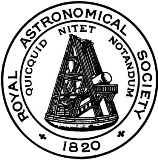10-14 September 2018
Armagh Observatory and Planetarium, Armagh, Northern Ireland
To join our Slack discussion group, please send an email to hdef2018@armagh.ac.uk using the address you would like to have invited to the group.
The Armagh Observatory and Planetarium will host a scientific conference from 10-14 September 2018 to address progress in the science of hydrogen-deficient stars.
The majority of stars have surfaces dominated by hydrogen, the most abundant element in the Universe. As stars shine, they convert hydrogen to helium and heavier elements. Many stars have already exhausted their hydrogen reserves; for some, even their surfaces are almost hydrogen free. Discovering how such stars form has been a challenge ever since 1795, when a dramatic variable star was first observed in the 'Northern Crown'. It was later found to be a hydrogen-free star blowing out great clouds of carbon-soot. R Coronae Borealis was discovered in the same decade that an Observatory was opened in Armagh, so it is appropriate that a team at Armagh has been studying similar stars for the last 20 years, finding evidence of colliding stars, born-again stars, and failed stellar explosions. It is also appropriate that, on the 50th anniversary of the opening of the Armagh Planetarium, the City of Armagh should host the fourth international conference on hydrogen-deficient stars.
After more than 200 years, the number and variety of hydrogen-deficient stars has multiplied several times. Classical examples include the R CrB and extreme helium stars, the hydrogen-deficient Ups Sgr binaries, and the hydrogen-deficient central stars of planetary nebulae or type II Wolf-Rayet [WC] stars. Since then have been added the PG1159 (or DO) pre-white dwarfs, several classes of He-sdO stars, the AM CVn binaries and various extremely low-mass pre-white dwarfs (ELM WDs). The conditions necessary to create a star deficient or devoid of hydrogen appear to be cataclysmic, for example involving an explosion contained within a star, or a collision between two stars. Such events may appear as transients, such as FG Sge or V4334 Sgr or other categories of novae.
The fourth such conference in 33 years, HDEF2018 will review decadal progress on basic data and fundamental properties, and examine evidence from imaging and photometry for the dynamical nature of hydrogen-deficient stars. It will compare and contrast the physical models used to interpret the observables, and examine empirical evidence for connections between object classes. It will discuss models for long-term evolution of stars which become hydrogen-deficient, and models for the dynamical events which occur when they collide or explode. With a revolution likely to come from data provided by GAIA, the next decade of research in hydrogen-deficient stars will bring answers to questions being asked for over 200 years.




